EXPERT
Issues
Locations
DOWNLOAD
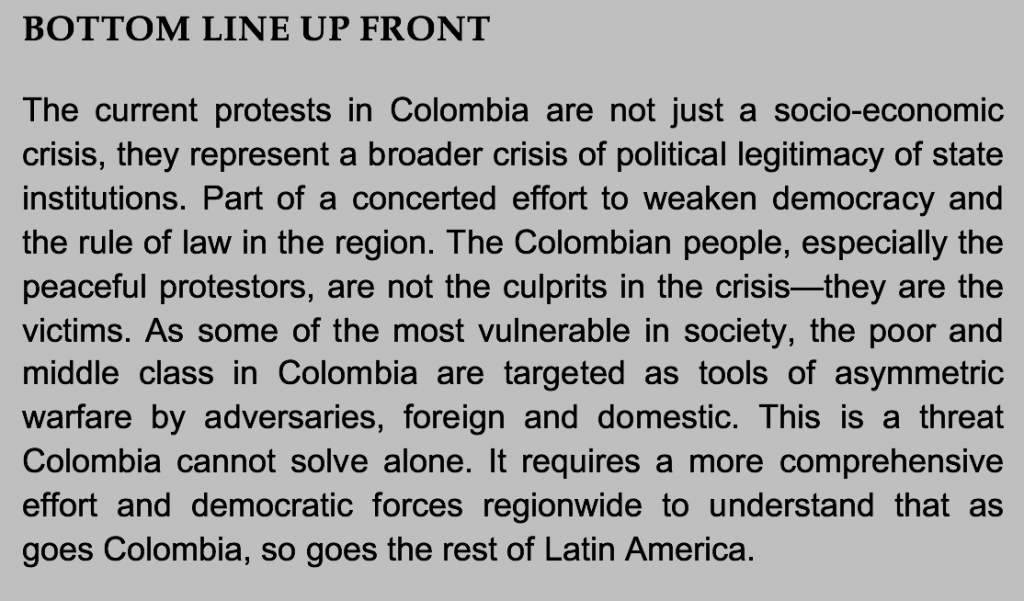
Colombia’s mass nationwide protests erupted on April 28, after President Ivan Duque introduced a tax reform that would have squeezed an already pandemic-weary population. The Duque government withdrew the reform four days later, but the protests intensified resulting in violent clashes between Colombian police forces and civilian protestors, and others. As of May 13, there were 34 deaths, including at least one police officer, and more than 1,500 injuries, more than half of which were police injured by blunt objects (blade, explosive, firearm, etc.), according to Colombia’s Foreign Ministry.[1] As well as more than 600 arrests for arson, vandalism, theft, and destruction of banks, businesses, vehicles, ATMs, cultural monuments, and public infrastructure in Colombia.[2]
Various human rights groups have reported repeated abuses and excessive force by Colombian police against protestors and others, to include the use of tanks with multiple non-lethal projectile launchers, namely in the city of Cali.[3] Colombia’s Defense Minister Diego Molano reported on May 3 that at least six (6) criminal groups were behind the acts of vandalism and violence in Colombia, subverting the otherwise peaceful protests. Among others, Minister Molano mentioned the dissidents of the Revolutionary Armed Forces of Colombia (FARC-D), National Liberation Army (ELN), and the Blue and Black Shields of the M-19 youth movement. Then on May 8, Defense Minister Molano announced that Colombian authorities arrested a local ELN urban front commander, and days later a dissident of the FARC, who were reportedly provoking violence in the city of Cali through improvised weapons and coordinating with militant youth groups and unidentified Venezuelans.[4]
Colombia experienced similar protests with less intensity in November 2019 and September 2020, where militant youth groups were identified for subverting the protests and escalating violence and vandalism.[5] In the lead up to the 2019 protests in Colombia, a subtle warning was sent by Maduro regime strongman, Diosdado Cabello, who referred to the protests as a “Bolivarian breeze” flowing from Venezuela. On April 7, prior to the current protests, Diosdado Cabello once again issued a veiled threat to Colombia on his nightly television program Mazo Dando, stating “we are going to wage war on your territory” in response to perceived potential aggression against the Venezuelan regime.[6] This asymmetric war has now arrived in Colombia.
VENEZUELA’S ASYMMETRIC STRATEGY
The Duque government has been dealing with increased provocation by the Maduro regime since its tenure began in August 2018. Colombia, however, has been the primary target of Venezuela’s national security strategy since the dawn of the Bolivarian revolution. A strategy that depends on the application of asymmetric warfare against the Bolivarian revolution’s foreign adversaries, namely Colombia.
In November 2004, Hugo Chávez directed the National Armed Forces (FAN) of Venezuela to develop a new defense doctrine for contemporary conflict through a document called “The New Strategic Map.”[7] Months later, in April 2005, at the 1st Military Forum on Fourth Generation and Asymmetric War in Caracas, Chávez presented this document and said, “I call upon everybody to start an … effort to comprehend the ideas, concepts, and doctrine of asymmetric war.”[8] Years later, in 2007, Chávez attempted to legitimize his transformation of Venezuela’s military through a constitutional referendum that failed. Nonetheless, in September 2008, he used an executive decree to transform the Venezuelan military from a conventional structure on defense domain capabilities to an asymmetric structure centered on control of territory. The new Bolivarian Armed Forces (FANB) of Venezuela would consist of five (5) regional combatant commands, called “REDI,” integrated with civilian militias and other armed non-state actors spread across twenty-four (24) zones of integrated defense, known as “ZODI.”
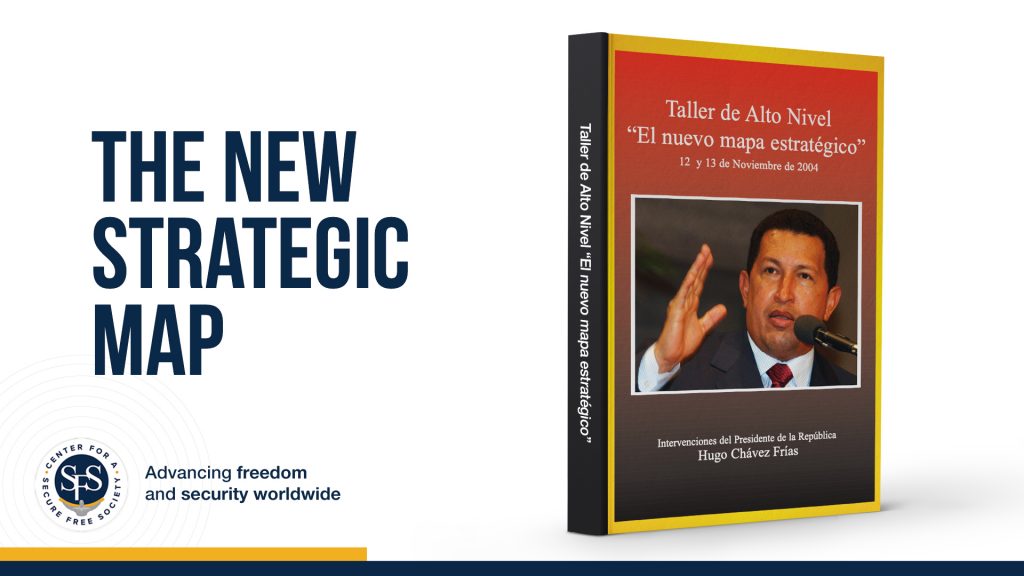
The new “Geometry of Power” shifted the Venezuelan military’s focus from the protection of state sovereignty to territorial expansion that would, as Chávez stated, “break the chains … of Venezuela’s old conservative, imperial, and colonial geography.”[9] Between 2013-2015, Nicolás Maduro expanded this asymmetric integrated-defense structure to eight (8) regions (REDI), 28 zones (ZODI), and 99 areas (ADI) becoming the new “map-maker-in-chief” as Venezuela’s military embedded with Transnational Criminal Organizations (TCO) in Colombia and elsewhere.[10] In 2020, Maduro added two (2) new temporal zones and this past March, added one more along the Colombian-Venezuelan border, where his military is engaged in combat operations against the FARC-D fighters led by Miguel Botache Santillana, alias “Gentil Duarte” and its control of the cross border drug trade.
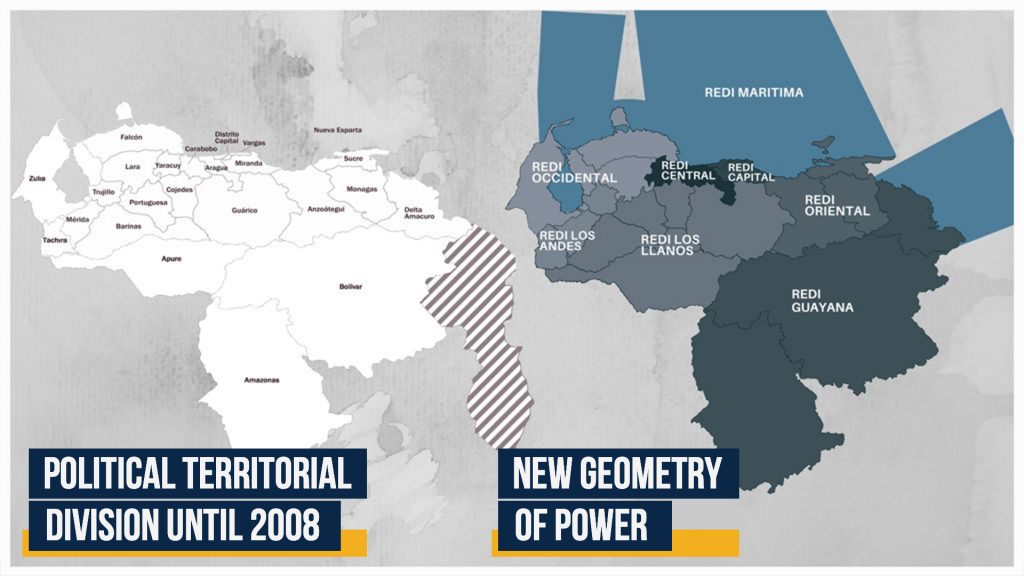
ROLE OF THE FARC-D AND ELN
After signing the 2016 Colombian peace agreement, some FARC factions refused to lay down their weapons and part of its leadership sought refuge in Venezuela. Known as FARC dissidents or “FARC-D,” former peace negotiator Luciano Marin Arrango, alias “Ivan Marquez,” announced in 2019 a new stage of armed struggle called the 2nd Marquetalia. Meanwhile, another FARC-D faction, led by Gentile Duarte, continued its illicit activities in Colombia. On March 21, Duarte’s faction attacked the Maduro regime’s military sparking an armed conflict on the border, in the Apure state of Venezuela. Many analysts chalked this up to infighting among narco-terrorists or even a partial fracturing of the FARC-Maduro relationship.[11] This ignores the strategic benefits that the Maduro regime gains from the ongoing border conflict, as a pretext to augment the recently established temporal zones of Venezuela’s asymmetric defense structure with additional combat power, to include Russian-made drones and Russian-advised reinforced infantry.[12] Maduro anticipated the armed conflict on the Venezuela-Colombia border months ago, when creating an anti-drug task force, setting the stage for the regime to accuse Colombia of trafficking drugs and for future cross-border operations by the Venezuelan military.[13]
While an armed conflict allows the Maduro regime to deploy additional combat forces to the Venezuela-Colombia border, the current protests in Colombia has opened a new opportunity for the FARC-D and ELN. In southwest Colombia, the port of Buenaventura is perhaps the most strategic port for TCOs because its location along the middle Pacific coastline in Colombia allows containers with illicit products to reach almost anywhere in the world with minimal risk of detection.[14]
When the current protests broke out in Colombia, it was Cali, the third largest city in the country, slightly more than two hours from the Buenaventura port, that experienced the highest levels of violence and vandalism. According to Semana, a prominent Colombian magazine, a classified Colombian intelligence report indicates that Gentil Duarte and Ivan Marquez are using the increased narcotics flow in Buenaventura to fund a renewed mission of urban terrorism, starting with Cali.[15] The recent arrests by Colombian police of an ELN urban terrorist known as “Lerma” and a FARC-D fighter alias “Jacobo” for organizing the violence in Cali during the recent protests, suggest the intelligence is correct.
Be it through urban terrorism or armed border conflicts, these scenarios present multiple opportunities for Venezuela to deploy its asymmetric warfare strategy onto Colombian territory. The Maduro regime has fully embedded Venezuela’s asymmetric defense structure with the ELN and FARC-D, which have become binational narco-terrorist groups with equal presence in both countries. This structure is powered by two of the most important commodities in the world—oil and gold—combined with many major forms of illicit finance and drug trafficking.
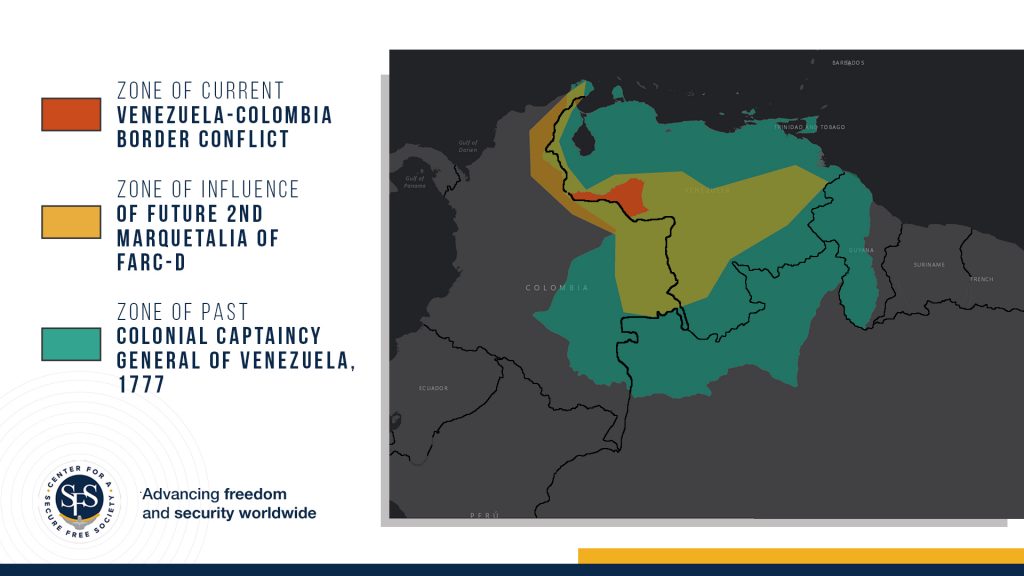
On May 5, in the midst of the Colombia protests, the FANB press account on Twitter posted an image of the map of the Captaincy General, which is a throwback to the “Kingdom of Venezuela” during colonial times in the 18th century.[16] Inferring that part of Colombia is considered, in the eyes of the Maduro regime, territory of the Bolivarian revolution. The Venezuelan regime has prepared for decades for this exact moment, when the Colombian state is at its weakest. And they have an asymmetric strategy to use illicit networks as a 21st century vanguard to conquer more territory of its neighbor. But first, the Bolivarian revolution needs to capitalize on the current unrest in Colombia by amplifying disinformation and misinformation that cause confusion and sow social divisions within Colombian society.
FOREIGN DISINFORMATION IN COLOMBIA
What’s happening in Colombia is not an isolated incident. Even protests in the United States in the Summer of 2020 had strikingly similar disinformation tactics and common iconography from the 2019 protests in South America.[17] The wave of 2019 protests that rocked Ecuador, Chile, and Colombia made it increasingly clear that some level of coordination was taking place in the region.[18] That coordination, however, is in the cyber domain where sophisticated click farms and net centers in distant territories spam social media with bots and troll accounts exacerbating the protests and spreading false narratives.
In one study of 7.6 million digital interactions related to the Colombia and Chile protests of 2019, digital forensic analysts found that less than 1 percent of users generated almost 30 percent of the content with a majority of the accounts geolocated in Venezuela.[19] Another study of 4.8 million Tweets between October 20 – November 5, 2019 discovered that a large cluster of the hashtags in favor of the protests in Chile originated in Venezuela, Nicaragua, and Cuba.[20] On December 11, 2019, during an anniversary event of the Colombian Customs Authorities, Vice President Marta Lucia Ramirez suggested that at least part of the social media traffic that fueled the protests in Colombia were projected out of Venezuela and Russia.[21]
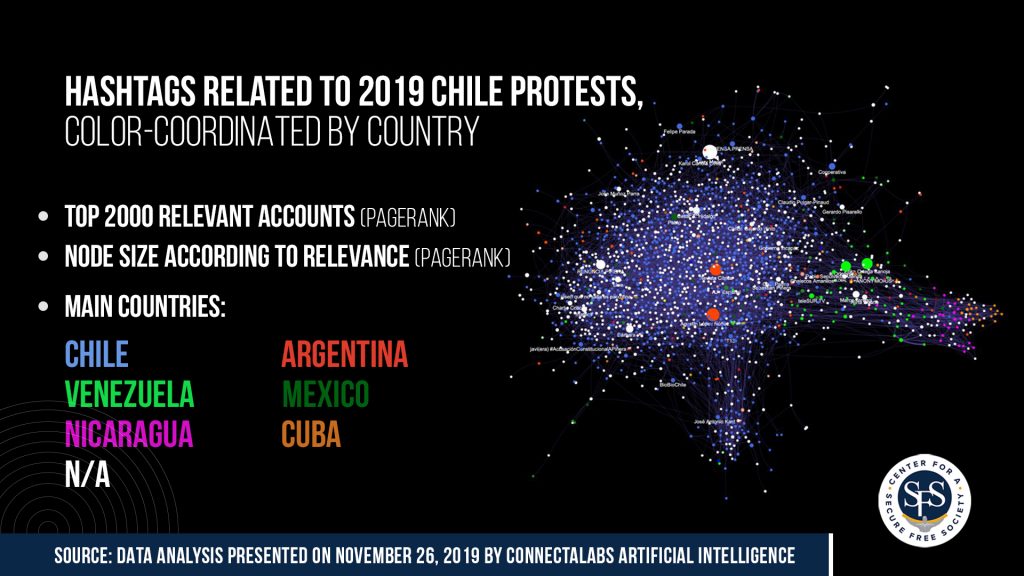
Colombia has a population of 51 million people, with almost three quarters of the country connected to the internet, mostly through smartphones. Of the ten (10) hours daily that Colombians average on the internet, four (4) of them are spent on social media.[22] This data expresses the urgency that Colombian authorities should place on digital manipulation and disinformation in the ongoing protests, which is the most important lesson from what transpired in Colombia and Chile in October and November of 2019.
In fact, some studies suggest that a similar disinformation effort is already underway in Colombia. According to a data-mining firm based in Miami, more than 7,000 troll accounts on social media are actively engaged in the current Colombia protests.[23] The troll accounts are, according to the firm, aimed at blocking and spamming any comments or posts critical of the protests, while amplifying specific narratives and hashtags such as #NosEstanMatando that show only one aspect of the on-the-ground reality in Colombia.
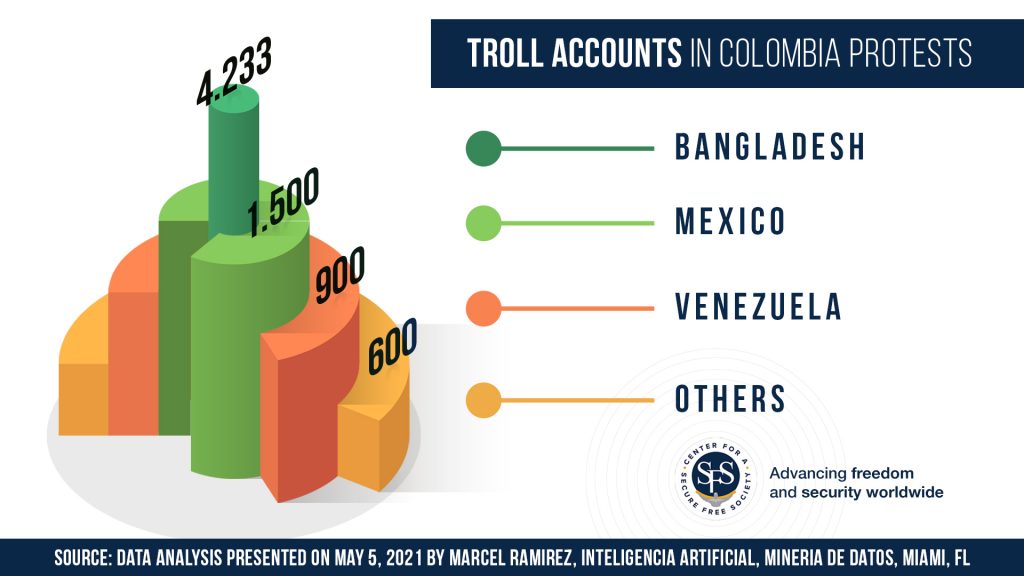
Most concerning is that the digital forensics reveals that these 7,000-plus troll accounts are managed by click farms in Bangladesh, Mexico, and Venezuela, possibly ran by servers in Russia and China. The data-mining firm shows samples of troll accounts based in Asia that have made viral-specific images and videos of the protests in Colombia, taken out of context.[24] SFS has not independently verified the analysis by the Miami firm, however, it matches previous disinformation efforts seen in Chile, Ecuador, and elsewhere, that have been verified.
According to the Atlantic Council’s Digital Forensic Research Lab, misinformation was also widespread during the current Colombia protests. One common mistake is recycling videos from protests in other countries and incorrectly presenting them as footage from current protests. The DFRLab specifically cites examples of recycled footage of clashes between police and protestors from 2019 in Ecuador and Chile, being erroneously presented by Colombian journalists and academics as evidence of excessive force by ESMAD, a specialized police unit deployed to control the current protests in Colombia.[25] These mistakes are common amidst the chaos, however, the reputational damage it does to Colombian security and police forces is almost irreversible, further eroding the legitimacy of the Duque government.
A CRISIS OF LEGITIMACY
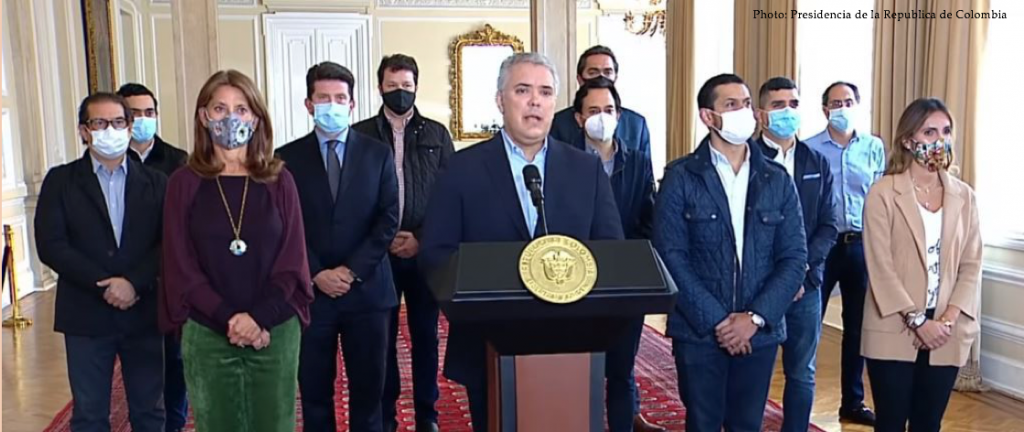
Latin America is arguably the most economically impacted region from the global pandemic. Colombia has seen more than ten years of economic growth evaporate in one year, with a 6.4 percent contraction in its GDP last year and unemployment skyrocketing to almost 16 percent.[26] It was just a matter of time before social unrest spilled onto the streets. Longstanding, legitimate grievances over poor public services, lack of economic opportunity, and rampant corruption are intensifying and have placed Colombia’s President Ivan Duque in a quagmire.
President Duque’s promise of unleashing Colombia’s human capital through its “orange economy” was in progress but the pandemic put these plans on pause. Instead, he is now attending to an economy that is increasingly indebted with a mounting deficit but like many center-right presidents in the region, the Duque government focused on the immediate economic challenge and missed the more long-range geopolitical dimensions surrounding the situation. Some say this is a case of good policy but bad politics, but it’s much more. An elaborate tax plan with an attractive name, “Sustainable Solidarity Law,” proved insufficient to quell an angsty population that, for more than a decade, despite economic growth, has been beaten down by rising insecurity, a failed peace plan, toxic politics, and external forces who capitalize on and catalyze the situation.
The crisis in Colombia is not just a socio-economic crisis, it’s a crisis of political legitimacy of state institutions in the country. It’s an assault on democracy and the rule of law. The Colombian people, especially the peaceful protestors, are not the culprits in the crisis—they are the victims. As some of the most vulnerable in society, the poor and middle class in Colombia are targeted as tools of asymmetric warfare by foreign and domestic adversaries to the Colombian state. This is a threat that the military and police forces cannot solve alone. It requires a much more comprehensive effort and democratic forces regionwide to understand that as goes Colombia, so goes the rest of Latin America.
NOTES
[1] Facts and Figures taken from two Fact Sheets produced on May 6 and May 13, 2021 by the Colombian Foreign Ministry on the “Balance of the National Strike in Colombia.”
[2] Op cit.
[3] “Human Rights Watch denounces the use of tanks with projectiles in Colombia,” Pledge Times, May 7, 2021. https://pledgetimes.com/human-rights-watch-denounces-the-use-of-tanks-with-projectiles-in-colombia/
[4] “Autoridades confirman la captura de alias ‘Lerma’, cabecilla del ELN señalado de actos vandálicos en Cali,” Infobae, May 8, 2021. https://www.infobae.com/america/colombia/2021/05/08/autoridades-confirman-la-captura-de-alias-lerma-cabecilla-del-eln-senalado-de-actos-vandalicos-en-cali/
[5] “EL TERRORISMO DE LOS INFILTRADOS,” Instituto de Estudios Geoestratégicos y Asuntos Politicos, Universidad Militar Nueva Grenada, Bogota, Colombia, January 31, 2020. https://www.lalinternaazul.info/2020/01/31/el-terrorismo-de-los-infiltrados/
[6] “Diosdado Cabello amenaza con hacer la guerra en Colombia si EE. UU. ataca a Venezuela,” FM Santander, April 8, 2021. https://www.youtube.com/watch?v=d6IaSXSsS1g
[7] Manwaring, Max. “Venezuela’s Hugo Chávez, Bolivarian Socialism, and Asymmetric Warfare,” Strategic Studies Institute, US Army War College, October 2005. http://www.hacer.org/pdf/Manwaring00.pdf
[8] Manwaring, Max. “Venezuela as an Exporter of 4th Generation Warfare Instability,” Strategic Studies Institute, US Army War College, December 2012.
[9] Otis, John. “Chavez plans new ‘geometry of power’ in Venezuela,” Houston Chronicle, November 28, 2007. https://www.chron.com/news/nation-world/article/Chavez-plans-new-geometry-of-power-in-Venezuela-1805476.php
[10] Arocha, José Gustavo & Humire, Joseph. “¿Cual es el Rol de las Fuerzas Armadas en Venezuela?” Capitulo en Desafíos para la Seguridad y la Defensa en el Continente Americano 2020-2030. Athena Lab, Santiago de Chile, diciembre 2020
[11] Acosta, Luis Jaime. “Disputa por narcotráfico, causa de combates en Venezuela y desplazamiento a Colombia: ministro,” Reuters, March 28, 2021. https://www.reuters.com/article/colombia-venezuela-idLTAKBN2BK0HG
[12] Gomez, Daniel. “La Fuerza Armada de Venezuela usa drones rusos en el conflict contra los grupos irregulars de la frontera con Colombia,” Al Navio, April 14, 2021. https://alnavio.es/noticia/21691/actualidad/la-fuerza-armada-de-venezuela-usa-drones-rusos-en-el-conflicto-contra-los-grupos-irregulares-de-la-frontera-con-colombia.html
[13] “Creada Superintendencia Nacional de Lucha Contra las Droga” Vicepresidencia de la Republica Bolivariana de Venezuela: http://vicepresidencia.gob.ve/?p=1726
[14] McDermott, Jeremy. “Buenaventura: vía de menor Resistencia para la cocaíana,” Semana Opinion, April 17, 2019. https://www.semana.com/opinion/articulo/el-narcotrafico-crece-en-el-puerto-del-litoral-pacifico-jeremy-mcdermott/609911/
[15] “Exclusiva: la historia secreta de la violenta toma de Cali,” Semana Portada, May 15, 2021. https://www.semana.com/nacion/articulo/exclusivo-la-historia-secreta-de-la-violenta-toma-de-cali/202147/
[16] Post by the official Twitter account of the Ministry of Defense, National Bolivarian Armed Forces of Venezuela Press Office (@PrensaFANB) on May 5, 2021: https://twitter.com/PrensaFANB/status/1389932321806196739?s=08
[17] Grantham, David. “U.S. riots take a page from the Latin American socialist playbook,” Breitbart News, August 1, 2020. https://www.breitbart.com/latin-america/2020/08/01/grantham-u-s-riots-take-a-page-from-the-latin-american-socialist-playbook/
[18] Farah, Douglas and Caitlyn Yates. “Turmoil in the Western Hemisphere: The Role of the Bolivarian Joint Criminal Enterprise in Latin America’s Unrest,” Perry Center, March 2020. https://www.williamjperrycenter.org/sites/default/files/publication_associated_files/Turmoil%20in%20the%20Western%20Hemisphere.pdf
[19] Farah, Douglas and Caitlyn Yates. “Turmoil in the Western Hemisphere,” Global Americans, April 15, 2020. https://theglobalamericans.org/2020/04/turmoil-in-the-western-hemisphere/
[20] Aikanarov and Josepenam. “ANALISIS TWITTER PROTESTAS CHILE (Parte 2) ## Detección de comunidades y comportamientos en base a Nacionalidad y Polaridad,” Github, November 28, 2019. https://github.com/connectalabs/riots_chile_analisis/blob/master/analisis_tweets_sobre_levantamiento_social.md
[21] Sierra, Paola. “Desde Venezuela y Rusia se estimulan las protestas: vicepresidenta,” Caracol, December 12, 2019. https://caracol.com.co/radio/2019/12/12/nacional/1576160520_888848.html
[22] Data taken from Digital 2021 Colombia report produced by Hootsuite and We Are Social, January 2021. To access the complete collection of reports, visit https://datareportal.com
[23] “¿Cómo operan cuentas falsas en redes, desde otros países, para agitar el paro en Colombia” La FM interviews Marcel Ramírez on May 12, 2021. https://www.lafm.com.co/colombia/como-operan-cuentas-falsas-en-redes-desde-otros-paises-para-agitar-el-paro-en-colombia
[24] SFS researchers spoke with Marcel Ramirez from Inteligencia Artificial, Marketing Politico, Mineria de Datos who has posted some of the results of his firm’s data analysis of the Colombia protests on his blog here: https://www.marcelramirez.com/blog
[25] Daniel Suárez Pérez and Esteban Ponce de León, “Misinformation about Colombia’s national strike spreads online and on air,” Digital Forensic Research Lab (DFRLab), May 7, 2021, https://medium.com/dfrlab/misinformation-about-colombias-national-strike-spreads-online-and-on-air-9c754666c06.
[26] Data is taken from the Departamento Nacional de Planeación (DNP) and the Departamento Administrativo Nacional de Estadisticas (DANE) that measure labor rates and other macroeconomic statistics in Colombia.

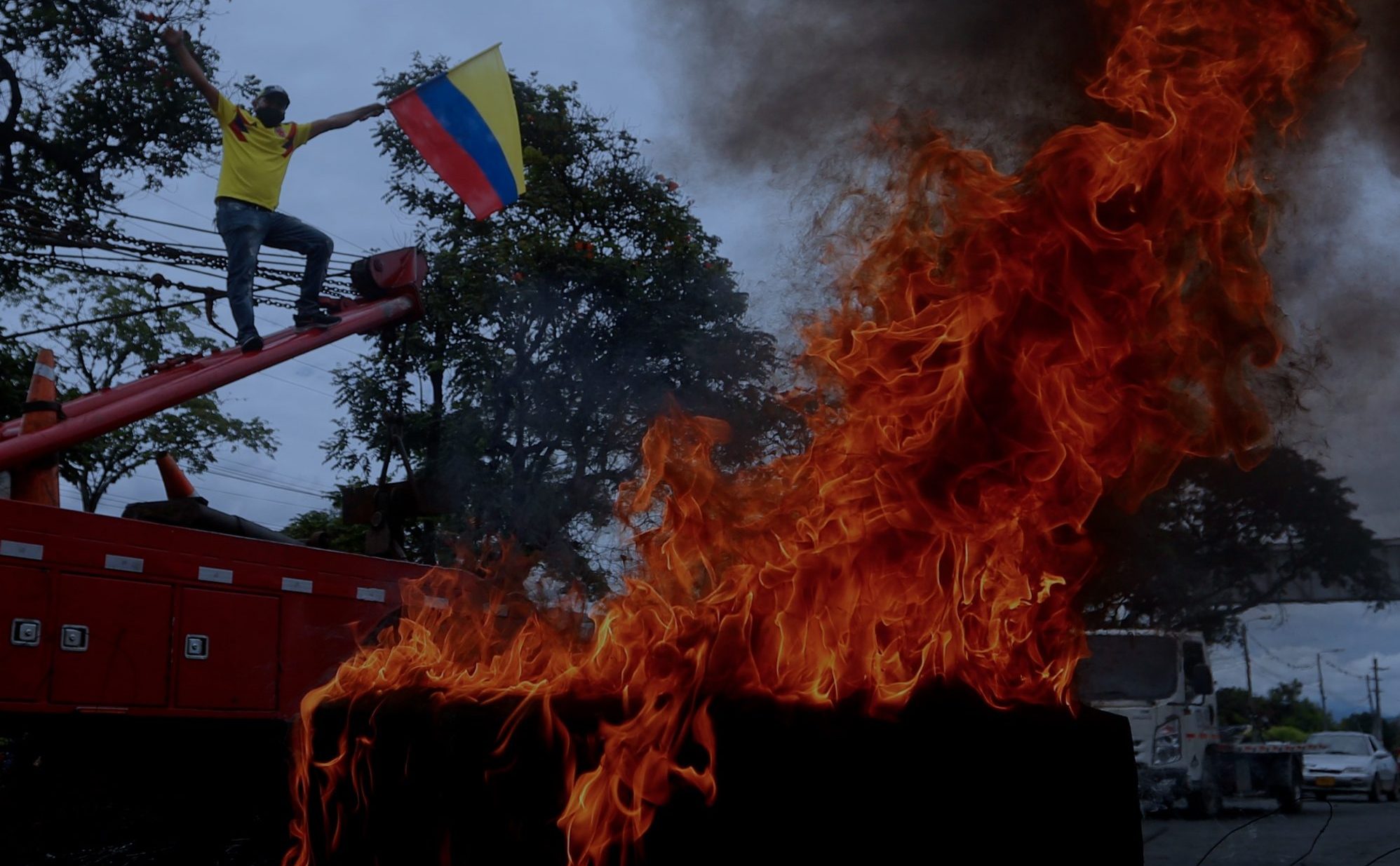
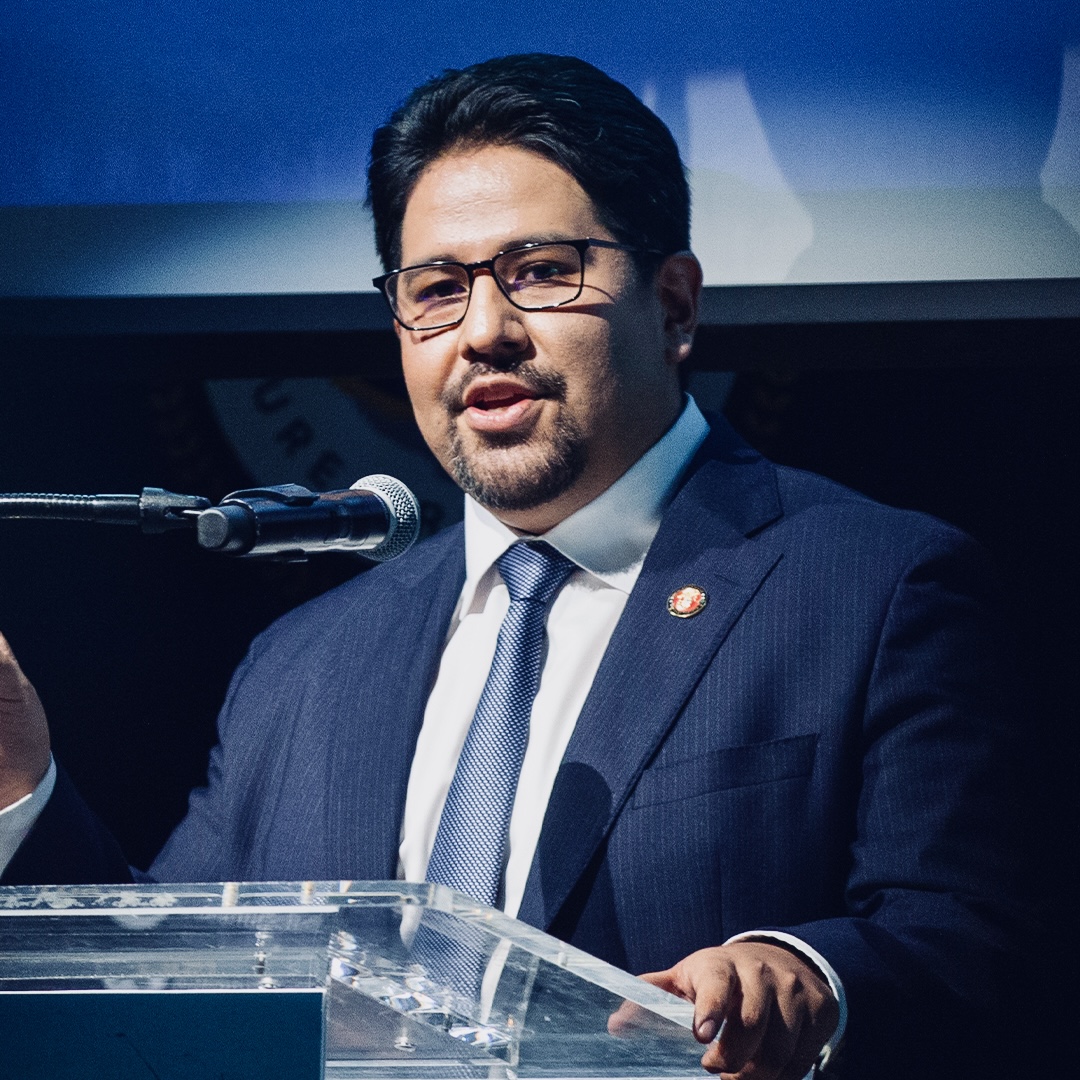 Joseph M. Humire
Joseph M. Humire